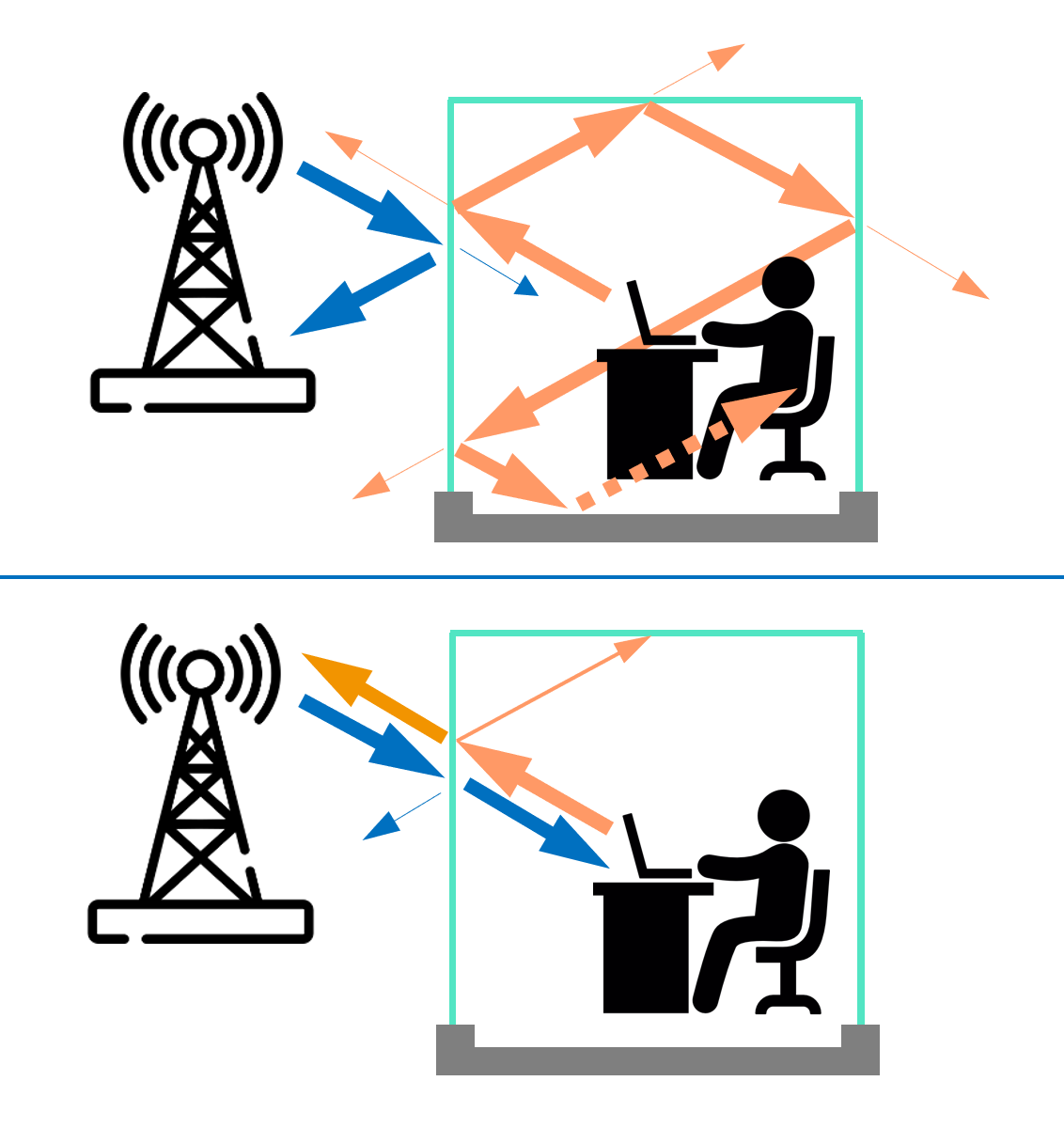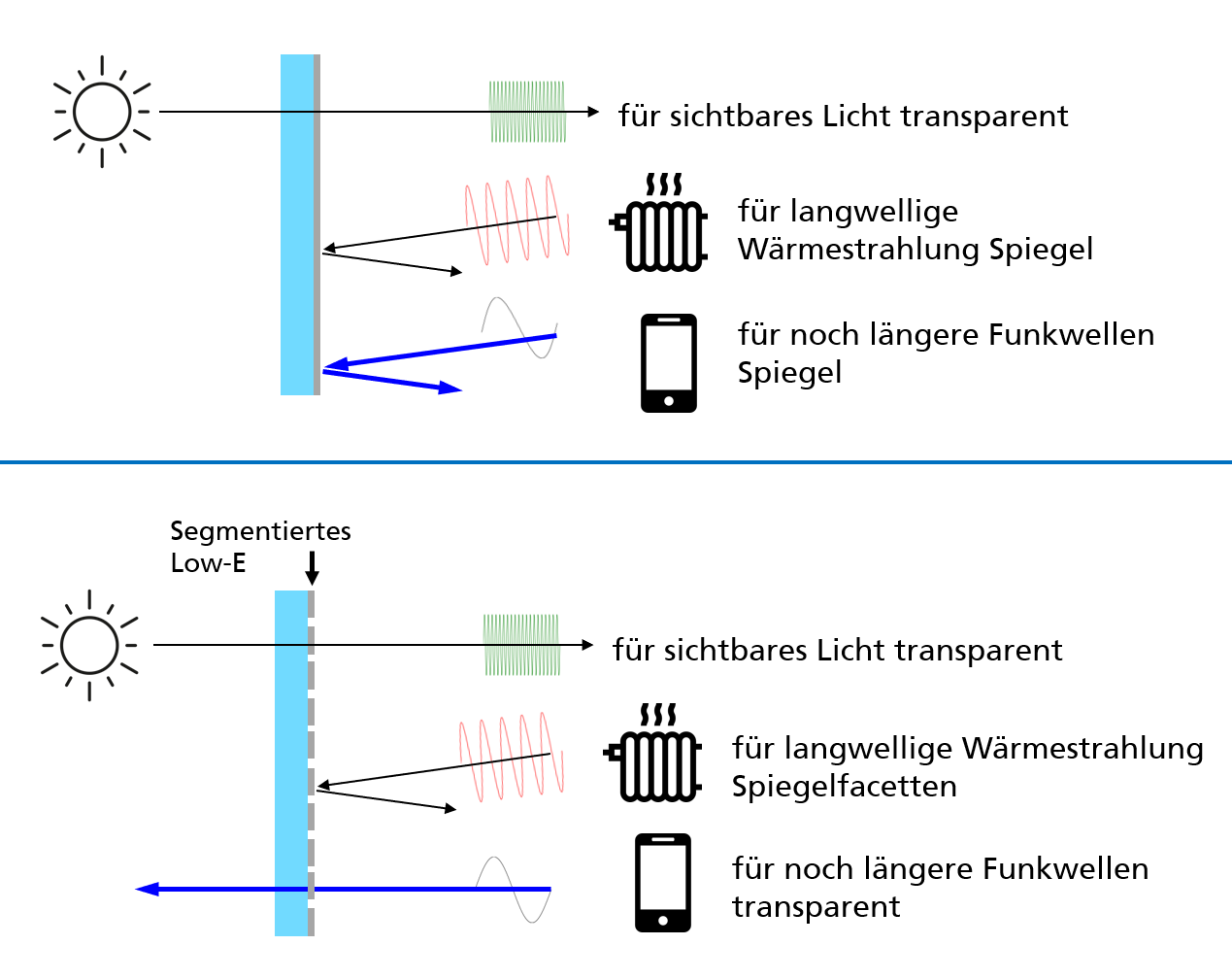| Duration: | 11/2020 - 05/2021 |
| Project Partners: | Arnold Glas GmbH & Co. KG, isophon glas GmbH |
| Project Focus: |
Radio Transparent Insulating Glazing
Modern Glass Facades With Good Mobile Phone Reception

© Graphics: Fraunhofer ISE, Icons created by Freepik from www.flaticon.com

© Graphics: Fraunhofer ISE, Icons created by Freepik from www.flaticon.com

In modern facades, double and triple insulating glazing with low-e or solar control layers are now state of the art. However, in addition to thermal radiation, the low-E layers also reflect radio waves. Due to this Faraday cage effect, mobile phone reception in modern buildings is usually poor.
In the research project "Radio transparent insulating glazing," an almost invisible segmentation of the low-E layers was developed. By increasing the transmitted radio signal, the quality of service of data and navigation services could be significantly improved. The U-value increases only very slightly. The solution is applicable for thermal and solar control coatings in double and triple glazing in both building and automotive applications.
In the construction of modern buildings, energy efficiency is playing an increasingly important role for meeting climate targets and complying with regulatory requirements. Glass facades play an essential part in this respect. Typically, double and triple insulating glazing with one or more thermal or solar control coatings are used. These coatings are transparent in the visible spectrum, but reflect in the infrared range, keeping the thermal radiation inside the building. However, the radio waves having yet longer wavelength are also reflected back. This effect creates a Faraday cage, which leads to massive restrictions in the reception of data services and GPS-based services. Typically, mobile devices react to this by increasing the transmission power. This results in reduced battery life as well as increased exposure to electromagnetic fields in the building, and even more so as the radiation is reflected back and forth inside the building multiple times.
Our approach to solving this problem is to segment the low-E layer, e.g. by laser ablation or other methods. The segments are designed to be significantly smaller than the wavelength of the relevant radio signals. As a result, an improvement of the transmitted signal by 20-50 dB (corresponding to a factor 100-100,000) could be achieved over the entire relevant frequency range (UMTS, LTE, 5G, WLAN, GPS).
Measurements on a demonstrator facade have shown that the reception of data services improves significantly when radio-transparent glazing is used. For example, an increase in the download data rate by a factor of 60 was achieved.
The U-value (heat transfer coefficient) increases by only a very limited amount of about 0.1 W/(m2K) with segmentation. Moreover, the grid created in the coating is almost invisible to the human eye. The thermal insulation effect as well as the light transmission are therefore not significantly affected.
The technology can be used for low-E and solar control glazing with all typical soft coatings. In addition, it can be combined with other functionalities such as sound insulation.
The development was carried out in cooperation with our partners isophon glas and Arnold Glas.
